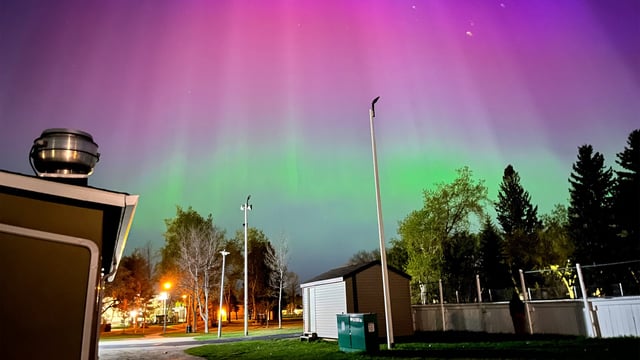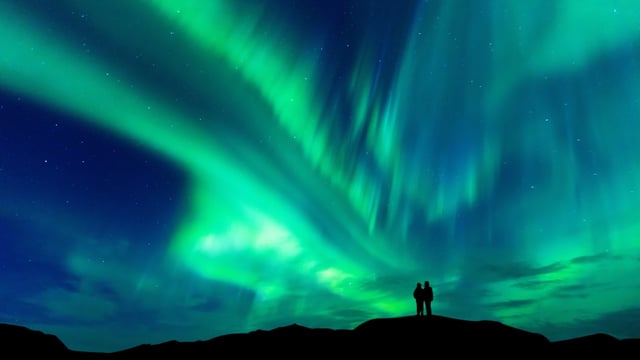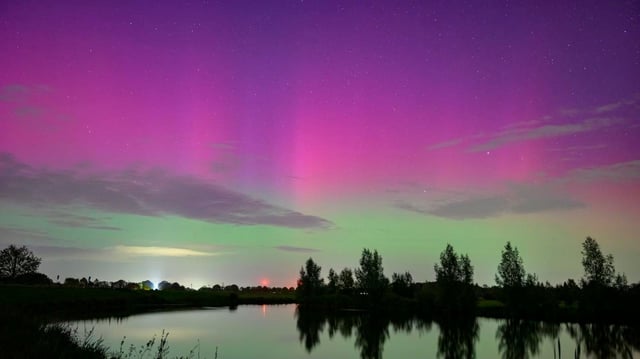Overview
- NOAA’s forecasted Kp index of 4 for Wednesday night marks a slight decline from Tuesday’s index of 5 but still signals active geomagnetic conditions.
- Charged particles from recent solar flares and coronal mass ejections have pushed the auroral oval southward into northern-tier states such as Washington, Idaho, Montana, North Dakota, Minnesota, Wisconsin and Michigan.
- The current solar maximum, which began in October 2024 and is expected to last through 2025, is driving more frequent and intense geomagnetic storms.
- NASA astronaut Nichole Ayers captured a vivid aurora borealis display from the International Space Station on May 23, showcasing the lights’ expanded reach at lower latitudes.
- Skywatchers are urged to seek dark, north-facing locations between 10 p.m. and 2 a.m. local time and to check NOAA’s 30-minute aurora forecasts for best viewing conditions.



